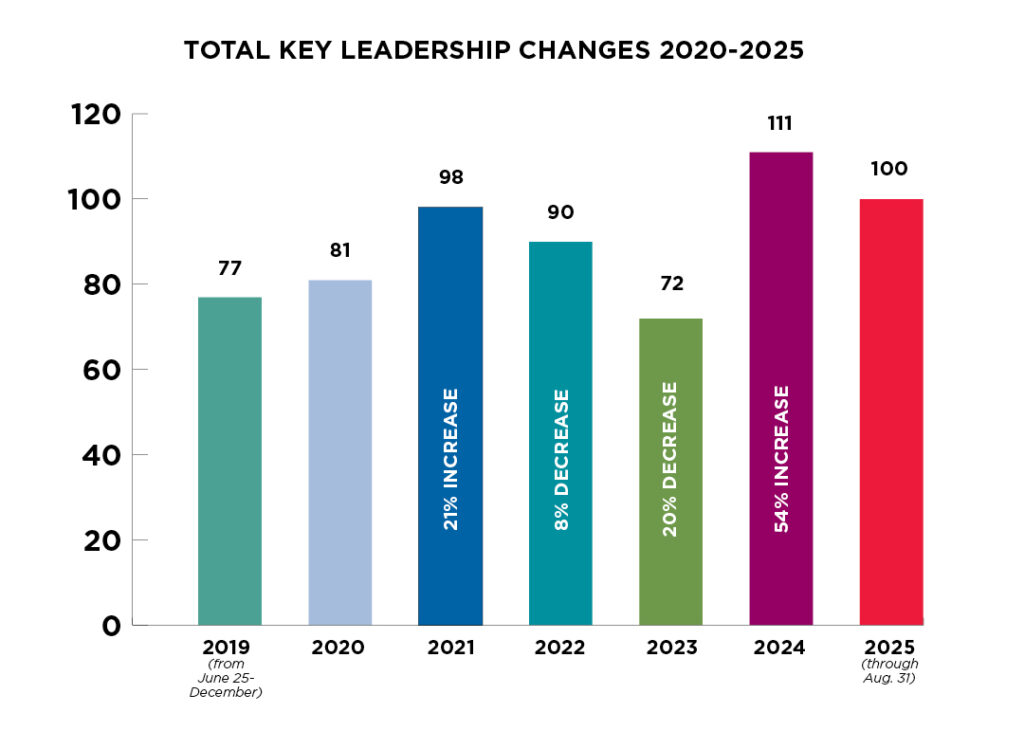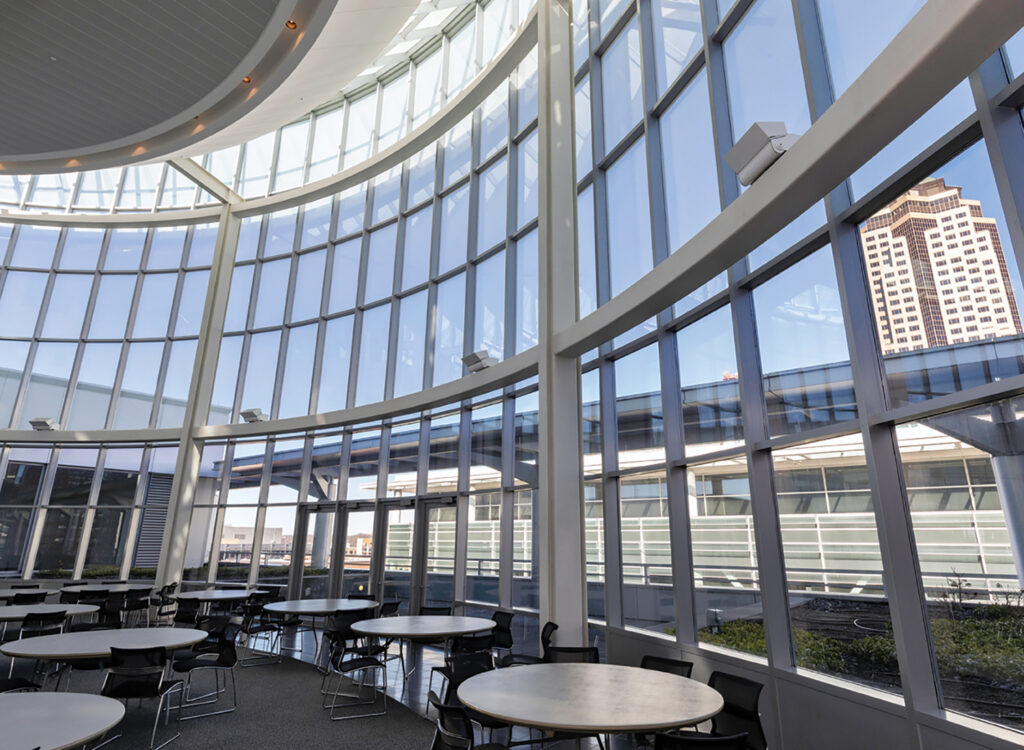Newsmaker Q&A: Dave Busiek

KCCI news director Dave Busiek will retire Dec. 11 after 39 years at the station, but not before we take a look back at a career that featured one of Iowa’s most seasoned, talented and driven journalists.
Many of you may be unfamiliar with Busiek because he has been mostly behind the scenes in his job as news director. But he spent years reporting and working as an anchor, seemingly a perfect fit for a station that has always had that “Uncle Walter” Cronkite feel that combines trusted journalists with a just-the-facts aversion to hype and hoopla.
Busiek had studied mostly radio at the University of Missouri at Columbia. After he graduated in 1976, he discovered there was an opening at WHO Radio. He drove to Des Moines in May 1976 to check it out.
“I was hired on the spot, so I went back and got my stuff and moved to Des Moines,” where he had lived ever since, Busiek said.
“It was a good job. It was a great station. So much history,” Busiek said in his booming but under-control broadcast voice and the rapid-fire, short sentences that play well on TV and radio. “There was a tremendous legacy at WHO Radio. I was there for three years. I was a reporter, then I was co-anchor of the afternoon drive news block, which was two and a half hours. I anchored that for about a year and a half.”
Then, another break.
“A friend of mine at KCCI said they had a reporting job. Mollie Cooney had moved to San Jose. She had covered the school board for KCCI, and I had covered the school board for WHO Radio.” (Cooney later returned to the station.)
He interviewed. He got the job. He started at KCCI on April 30, 1979. “I have been with KCCI ever since,” Busiek said.
Note: On Busiek’s first day at KCCI, Blondie’s “Heart of Glass” was the top record, former peanut farmer Jimmy Carter was president, and the Ayatollah Ruhollah Khomeini was a day or two away from returning to Iran after 15 years of exile.
By 1981, Busiek was anchoring Sunday night broadcasts. In 1983, KCCI veteran Russ Van Dyke retired. Busiek took his place on the 10 p.m. newscasts, co-anchoring with Kevin Cooney from 1983 to 1988.
In 1988, he was named assistant news director, with Paul Rhodes as news director until 1990.
Busiek took over as news director on Jan. 1, 1990. Rhodes stayed on to anchor a few more years.
When Cooney retired in 2015 after 33 years at the station, KCCI had employed only three main male anchors — Van Dyke, Rhodes and Cooney. Busiek has been the news backbone of the operation, largely out of camera view. He nurtured a high-expectation-but-collaborative atmosphere.
His leadership didn’t begin and end in the hallowed halls of Channel 8. Busiek has been a leader in freedom of information efforts in Iowa, a widely respected journalist with a nice-guy image that escapes some in the field, and part of the reason KCCI remained the No. 1 station in the market for most of his career.
Busiek testified before a U.S. Senate subcommittee in favor of opening federal courtrooms to television cameras, led the Radio and Television News Directors Association in the days following Sept. 11, 2001, and secured KCCI as a co-sponsor of the 2015 Democratic presidential debate.
His other awards and milestones include recognition by Broadcasting and Cable magazine as News Director of the Year, the Silver Circle Award of the Midwest Television Academy of Arts and Sciences, induction into the Iowa Broadcasters Hall of Fame, and the Jack Shelley Award from the Iowa Broadcast News Association.
Busiek will be replaced by former KCCI staffer Allison Smith, the station’s fourth news director, who had been assistant news director at sister station WLWT.
We interviewed Busiek about his varied experience in a couple of decades of extreme change in journalism.
What’s it like to get ready to retire?
If there is anything I’m proud of, it’s that this wonderful television station that signed on the air in 1955 has had three news directors. I don’t think there is another station in America that has had that kind of tenure.
Why management?
I had strong feelings about how to do good journalism. I think that I felt that I had done everything I wanted to do as a reporter. I had done five years of anchoring. But honestly, even back in ’83 I agreed to do the anchor job because I wanted to know what that experience was like for a future career in management. I have always thought it has helped me to know what anchors go through and the pressures they have. For whatever reason, I just felt that I wanted to do management, so I did. Truth be told, I was an OK anchor, but not a great anchor.
Did you want to move to management to guide things in a different direction?
I think the business was changing even then. It changes today. I’m a pretty capital “J” journalism guy. I think first of all I wanted to preserve good journalism. I had very strong ideas about visual storytelling. I love to tell stories with pictures.
I wanted to do something about picking up the pace. I think we were a little plodding in those days, long stories, low story count. I also felt we needed to move away from some of the standard fare. We were always a straight-ahead news organization. In those days, you covered the City Council and turned a story, even if there wasn’t something of interest there. I felt we should be there to see if there was a story to do, but if not, let’s get out, let’s find something that is visual and compelling and relevant to people’s lives instead of some internecine battle at the Legislature.
Are you able to let reporters and producers do their job with some independence?
Very much so. I’m a pretty hands-off manager. I am primarily a reporter. All of my instincts come from my days as a reporter. Reporters don’t like anybody telling them what to do or getting involved in their business. And so I’ve always tried to hire good people, smart people, and let them do their jobs.
It seems like KCCI has been No. 1 most of your career.
There was a time in the early 1990s when we slipped to No. 2 [and WHO was on top], but we’ve been No. 1 most of my time here. I wouldn’t go so far to say we’re a dominant No. 1 these days. It’s a really competitive ratings race. It’s hard to stay No. 1, but it’s even harder to become No. 1. We’ve always tried to run the place like we’re No. 2, because you don’t want a tendency to rest on your laurels.
What was your biggest story as a reporter?
Probably the story that had the most impact and had the most meaning was the prison riot at Fort Madison in ’81. I had been down there doing a series of stories. I had some sources. And this guy called me and he said, “Dave, you need to get down here. Inmates have taken over the penitentiary, and I don’t know exactly what’s going on.”
So we chartered a plane and flew down there and we were the first ones to arrive and we got into the warden’s office. By then a group of inmates had homemade weapons and had taken over the institution and were holding seven guards, including the director of security, and they wanted to meet with media [to go over demands].
[Busiek was one of three journalists inside before officers set up a perimeter.]
So the inmates walked up with these homemade shotguns holding them at the backs of the guards and there were some guard trainees that they had being held hostage up in a window on the cell blocks. So through the bars, we did this interview, and I thought, “What am I walking myself into?” I thought I would check their eyes, and if they looked like they were high or something, I was going to high-tail it out of there, but it was fine. They griped about the food and the conditions, and all of that. So we had this tremendous interview and this was the lead story on all the networks, but they were all being kept a quarter mile away by the state patrol. We had this great story and it was exclusive and it was about 7 o’clock at night and I gotta get back for the 10 o’clock news. So I lay down on the back floor of our Chevy Chevette and the pilot that we chartered drove the Chevy Chevette. I left the photographer inside [the prison] and put a blanket over me. All the media knew I was inside. They would have pulled me limb from limb if they saw me. I had the exclusive at 10 o’clock and the photographer got great stuff of a full-blown riot that night for the next day’s newscasts.
Have you had any difficult egos on the staff?
We have been very fortunate in that regard. Typically, anyone who came in with their head in the clouds left in a year or two.
Have you had any concerns with freedom of information weakening in Iowa?
Not weakening in Iowa, but at the federal level it is very frustrating. I really thought by the end of my career, that we would have cameras and microphones in federal courts. It’s eternally frustrating to me that we have not been able to convince the courts [to let cameras in]. Look what is going on in this country today. Every American had the right to see the Paul Manafort trial. Every American had the right to see Gore v. Bush in 2000 in front of the U.S. Supreme Court. At a time when we’re being attacked for being purveyors of fake news, what better way to combat that than to let Americans watch gavel-to-gavel coverage of what’s happening? We’ve been extremely fortunate in Iowa, where we’ve had cameras in the courts for 30 years. We have critical open records laws. Iowa has been progressive in that regard.
What happens at the end of the year after you retire?
I look forward to some travel with Laura and being able to read books without falling asleep at 9 o’clock by Page 3. I look forward to riding my bike, and just slowing down a little bit.










